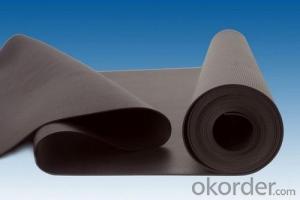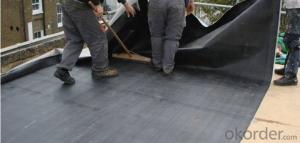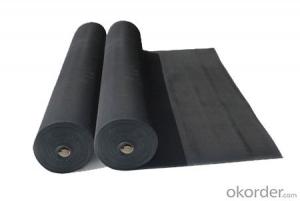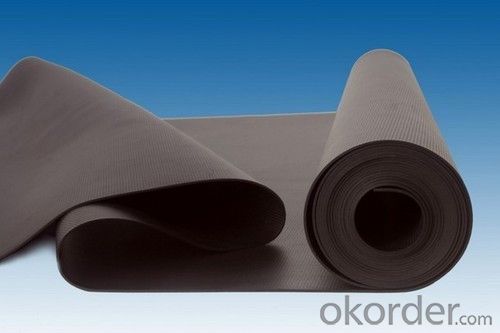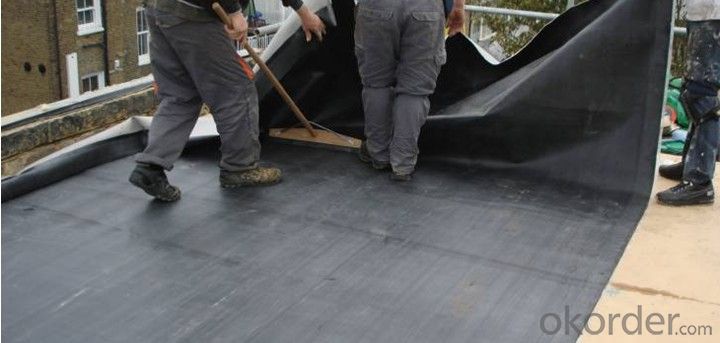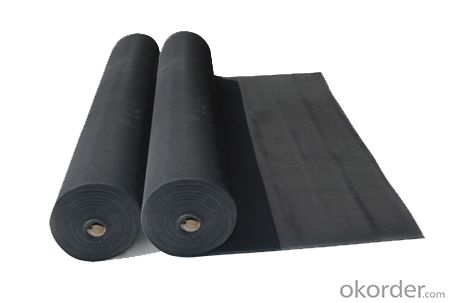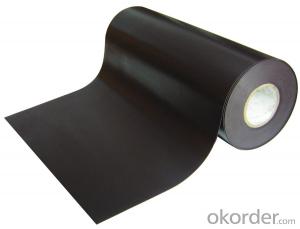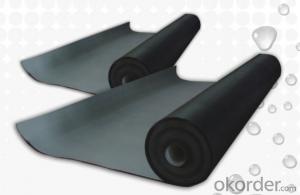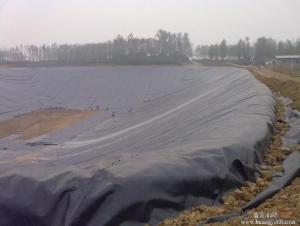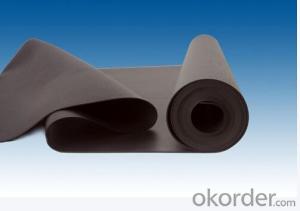EPDM Waterproofing Membrane for Construction
- Loading Port:
- China main port
- Payment Terms:
- TT OR LC
- Min Order Qty:
- 5000 m²
- Supply Capability:
- 100000 m²/month
OKorder Service Pledge
OKorder Financial Service
You Might Also Like
Introduction for EPDM Waterproofing Membrane:
EPDM (TBD) self adhesive rubber waterproofing membrane is used (OP) rubber waterproofing membrane as based materials, Surface coating Nano-polymer adhesive glue squeeze a new high-strength self adhesive waterproofing.
Characteristic of EPDM Waterproofing Membrane:
1>Excellent anti-aging performance, service life up to 50 years
2>Working well with in -40°C to 100°C,it can be constructed with a single layer in ambient temperature. 3>Waterproofing on various kinds of underground project,industrial of civil buildings and structures. 4>high extension rate, high tensile strength, small size changes at heat treatment
5>Good plant roots penetrability resistance and can be made waterproofing layer of planting roof
6>Special modified molecular structure ,effectively resolving the current domestic and foreign glue joint problem . 7>Good low temperature flexibility, and good performance of adapting to ambient temperature changes. 8>Convenient application ,solid joint, no environment pollution
9>chemical corrosion Resistance, can be used for special occasions
Application Range of EPDM Waterproofing Membrane:
EPDM (TBD) selfadhesive waterproofing membrane used in roofing projects, exposed roofing, building foundations, basements, storage tanks, subways, tunnels, supermarkets, airports and other buildings waterproof.
Item | Thickness(mm) | Width(mm) | Length(m) | Color |
1.0—2.0 | 1200 | 20 | Black | |
Deviation | -1 +15 | --1 | Multicolor |
FAQ of Waterproofing Membrane
a.Can we get some samples before place order?
Answer: We can send the free samples to you by freight collect.
b.How many years can your PVC membrane guarantee?
Answer: We will guarantee the quality for 5 years at least.
c.Which countries you ever export the product?
Answer: We export the PVC membrane to South Africa, Middle east and even European countries.
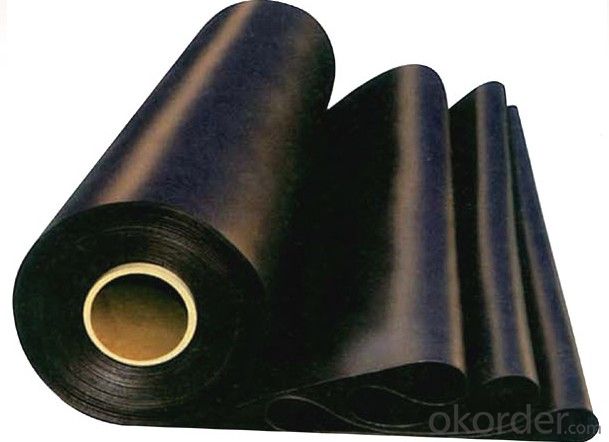
- Q: Does a waterproofing membrane require any specific cleaning or maintenance procedures?
- Yes, a waterproofing membrane does require specific cleaning and maintenance procedures. Regular cleaning of the membrane surface is necessary to remove any dirt, debris, or organic materials that may accumulate over time. It is recommended to use mild soap or detergent and a soft brush or sponge for cleaning. Additionally, periodic inspections should be conducted to check for any damage, cracks, or leaks in the membrane, which should be promptly repaired. Regular maintenance and proper care are crucial to ensure the long-term effectiveness and durability of the waterproofing membrane.
- Q: Can a waterproofing membrane be used for temporary structures or tents?
- Yes, a waterproofing membrane can be used for temporary structures or tents. Waterproofing membranes are designed to provide a protective barrier against water, preventing it from penetrating the surface and causing damage. This makes them an ideal choice for temporary structures or tents, as they can effectively keep the interior dry during rain or other wet conditions. Additionally, waterproofing membranes are often lightweight and flexible, making them easy to install and remove, which is especially beneficial for temporary structures or tents that may need to be relocated or dismantled.
- Q: Does a waterproofing membrane prevent water infiltration through concrete?
- Yes, a waterproofing membrane can prevent water infiltration through concrete. A waterproofing membrane is a material that is applied to the surface of concrete structures to create a barrier against water penetration. It is designed to be impermeable to water and to provide a protective layer that seals the concrete surface. When properly installed, the waterproofing membrane can effectively prevent water from seeping through the concrete, thereby protecting the structure from water damage and potential structural issues. However, it is important to note that the effectiveness of a waterproofing membrane depends on the quality of the materials used, the installation process, and the maintenance of the membrane over time.
- Q: Can a waterproofing membrane be used for a commercial building roof?
- Yes, a waterproofing membrane can be used for a commercial building roof. Waterproofing membranes are commonly used in commercial roofing systems to provide a durable and effective barrier against water penetration. These membranes are designed to withstand the challenges of commercial buildings, such as exposure to the elements, foot traffic, and mechanical equipment. They offer excellent protection against leaks, moisture damage, and other potential roofing issues, making them a suitable choice for commercial applications.
- Q: Can a waterproofing membrane be used for storage tanks or containment areas?
- Storage tanks or containment areas can utilize a waterproofing membrane to prevent water or liquid penetration. These membranes serve as a barrier against such infiltrations and are therefore ideal for containment purposes. Rubber, PVC, or bitumen are commonly used materials for these membranes due to their water-resistant properties. They can be applied either internally or externally to storage tanks or containment areas to safeguard against leaks and moisture-related deterioration. Moreover, the use of waterproofing membranes aids in preventing the development of mold or mildew, thereby ensuring a secure and hygienic environment for stored materials or liquids.
- Q: Can a waterproofing membrane be used for a swimming pool deck?
- Yes, a waterproofing membrane can be used for a swimming pool deck. Waterproofing membranes are commonly used in construction and are designed to prevent water penetration. They are typically applied to surfaces such as concrete or wood to ensure that water does not seep through and cause damage. For a swimming pool deck, where exposure to water is constant, using a waterproofing membrane can help protect the underlying structure and prevent issues such as water damage, rotting, or mold growth. Additionally, a waterproofing membrane can also provide a slip-resistant surface, enhancing safety for pool users.
- Q: Are waterproofing membranes resistant to gasoline?
- Yes, waterproofing membranes are generally resistant to gasoline.
- Q: Are there any specific considerations for installing a waterproofing membrane on masonry surfaces?
- When installing a waterproofing membrane on masonry surfaces, there are several important factors to keep in mind. First and foremost, it is crucial to thoroughly clean and prepare the masonry surface before installing the membrane. This means removing any loose debris, dirt, or old coatings that could hinder the membrane's ability to adhere. Choosing the right type of waterproofing membrane is also essential. Since masonry surfaces can vary in terms of porosity and texture, it is important to select a membrane that is compatible with the specific type of masonry. This will ensure optimal results and maximum effectiveness. In addition, proper surface preparation and priming are necessary before applying the membrane. This may involve using a primer that improves adhesion and creates a strong bond between the masonry and the membrane. The installation technique is another crucial aspect to consider. It is important to apply the membrane evenly and smoothly, avoiding any gaps, wrinkles, or air bubbles that could compromise its performance. Following the manufacturer's guidelines and recommendations regarding the application method and curing time is also vital. Lastly, regular inspection and maintenance are necessary to ensure the long-term effectiveness of the waterproofing membrane. This includes periodically checking for any signs of damage, such as cracks or peeling, and promptly addressing any issues that arise. By taking these specific factors into account, a waterproofing membrane can be successfully installed on masonry surfaces, providing reliable protection against water infiltration and damage.
- Q: How does a waterproofing membrane handle hydrostatic pressure?
- A waterproofing membrane handles hydrostatic pressure by creating a barrier that prevents water from penetrating through it. It is designed to withstand the pressure exerted by water, ensuring that it remains intact and prevents any leakage or seepage.
- Q: Can a waterproofing membrane be used for parking garages?
- Yes, a waterproofing membrane can be used for parking garages. A waterproofing membrane is a protective layer that is applied on surfaces to prevent water penetration. In parking garages, it is essential to have effective waterproofing to protect the structure from water damage, such as corrosion of steel reinforcement and deterioration of concrete. Parking garages are exposed to various sources of water, including rain, snow, and vehicle fluids, which can seep through cracks and joints. A waterproofing membrane acts as a barrier, preventing water from infiltrating the structure and causing damage. There are different types of waterproofing membranes available for parking garages, including sheet membranes, liquid-applied membranes, and cementitious coatings. These membranes can be applied on horizontal and vertical surfaces, such as floors, walls, and ramps, to create a watertight seal. When selecting a waterproofing membrane for a parking garage, factors such as durability, flexibility, and resistance to chemicals should be considered. The membrane should be able to withstand the heavy loads and traffic conditions typically found in parking garages. Overall, using a waterproofing membrane in parking garages is crucial to protect the structure and extend its lifespan by preventing water-related damage. It helps maintain the structural integrity and aesthetics of the garage while ensuring a safe and functional environment for users.
Send your message to us
EPDM Waterproofing Membrane for Construction
- Loading Port:
- China main port
- Payment Terms:
- TT OR LC
- Min Order Qty:
- 5000 m²
- Supply Capability:
- 100000 m²/month
OKorder Service Pledge
OKorder Financial Service
Similar products
Hot products
Hot Searches
Related keywords
